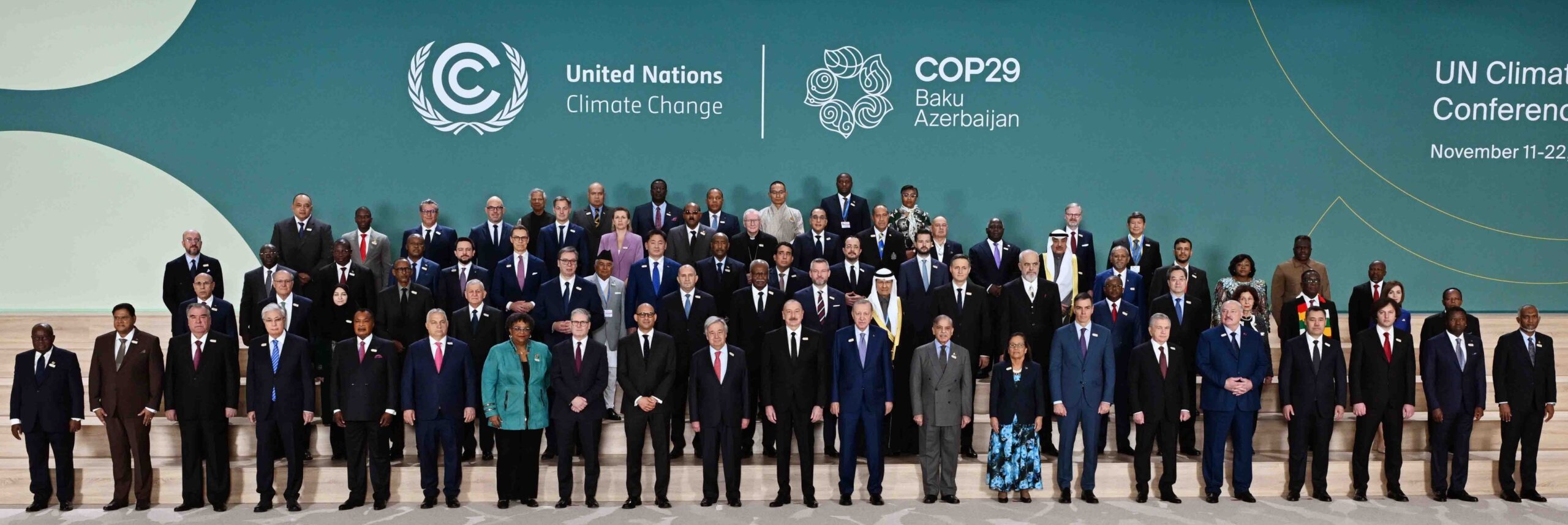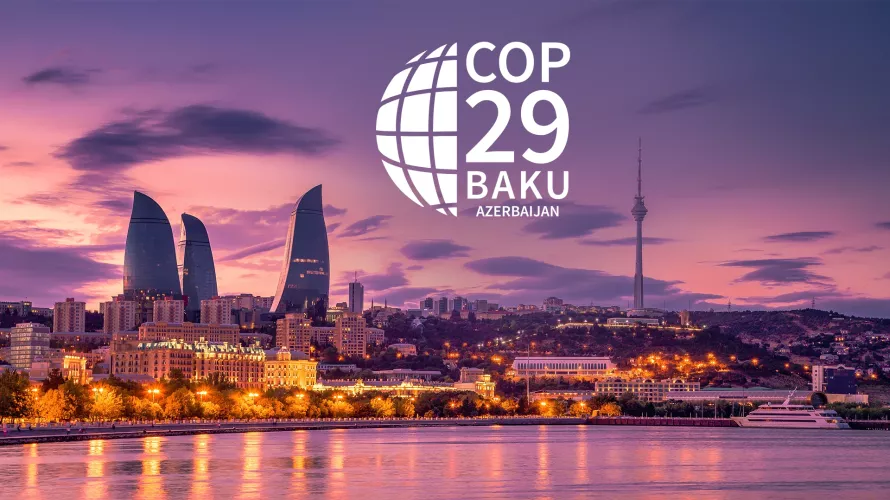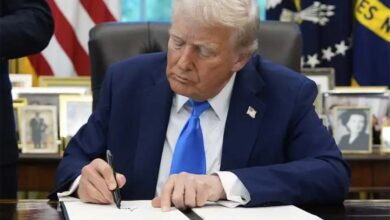COP29 climate talks amid soaring temperatures, rising emissions

The 29th iteration of the annual United Nations climate talks, the Conference of Parties (COP29) to the UN Framework Convention on Climate Change (UNFCCC), is underway in Baku, Azerbaijan from 11–22 November. Amid record high global temperatures and increasing incidents of climate catastrophes, COP29 provides a pivotal opportunity for the world community to accelerate action, and enhance resources needed to confront the climate crisis.
In his address to the two-day world leaders summit at COP29 on 12 November, UN Secretary-General António Guterres stated: “We are in the final countdown to limit global temperature rise to 1.5 degrees Celsius. And time is not on our side. At COP28, all of you agreed to move away from fossil fuels; to accelerate net zero energy systems and set milestones to get there; to boost climate adaptation; and to align the next round of economy-wide national climate plans with the 1.5 degree limit. It is now time to deliver.”
Kuwait was represented at the COP29 summit by the representative of His Highness the Amir of Kuwait Sheikh Meshal Al-Ahmad Al-Jaber Al-Sabah, His Highness the Crown Prince Sheikh Sabah Khaled Al-Hamad Al-Sabah. In his speech at the summit, His Highness the Crown Prince reiterated Kuwait’s commitment to environmental sustainability, and climate framework agreements, and added that the country seeks to align its economic growth with low-carbon development, attain climate resilience by 2050, and achieve carbon neutrality by 2060.
The crown prince explained that in order to achieve these climate gains, Kuwait is developing strategic clean energy projects that reduce carbon emissions by employing low-carbon technologies. He added that through long-term investment partnerships in sustainable energy, the country also aims to lower its greenhouse gas (GHG) emissions by 80 percent by 2040 and generate 50 percent of electricity from solar power by 2050.
The Paris Climate Agreement, the legally binding international treaty on climate signed by 196 countries (Parties) in 2015, calls on nations to limit average global temperature increase to well below 2°C above pre-industrial levels, and pursue efforts to limit the temperature increase to 1.5°C above pre-industrial levels by 2100. But, in order to achieve this target global GHG emissions must peak before 2025 at the latest and decline 43 percent by 2030.
Despite promises at COP28 to transition away from fossil fuels, the new ‘Global Carbon Budget’ report, published by a consortium of scientists worldwide, shows that global carbon dioxide (CO2) emissions are set to increase to 41.6 billion metric tons in 2024, up from the 40.6 billion tons last year. Nearly 90 percent of these emissions, or 37.4 billion tons , came from the burning of coal, oil and gas.
The rest of global CO2 emissions came from land use, a category that includes deforestation and forest fires. Experts point out that the slow progress in reducing GHG emissions means that, without immediate and steep emission cuts of around 9 percent every year from now until 2030, and beyond, the aim of limiting global temperature rise to 1.5C will no longer be realistically possible.
Addressing global leaders gathered at COP29, the UN Secretary General said, “Doubling down on fossil fuels is absurd. The clean energy revolution is here. No group, no business, and no government can stop it. But you can and must ensure it is fair, and fast enough to limit global temperature rise to 1.5 degrees Celsius.”

Urging global leaders to focus on three priorities to address the climate crisis, he stressed that the first priority was to urgently reduce global emissions so as to limit global temperature rise to 1.5 degrees Celsius. Second, you must do more to protect people from ravages of the climate crisis. The third priority, said the UN Chief, is finance for reducing emissions, as well as for enhancing adaptation and mitigation efforts in less endowed states.
Guterres pointed out that developing countries eager to implement climate action face several challenges, including scarce public finance, high cost of capital, crushing climate disasters, and debt servicing that soaks up funds. He added, “The result is adaptation denied, and a tale of two transitions. Last year, developing and emerging markets outside China received just fifteen cents for every dollar invested in clean energy globally. COP29 must tear down the walls to climate finance.”
Considering the direct relation between global average temperatures and concentration of GHG emissions in the atmosphere, solving the climate change challenge cannot be realized without drastically reducing CO2 emissions, and enhancing carbon sinks, such as dense forest covers or mangroves along coastal zones, that absorb atmospheric carbon. Efforts to reduce GHG emissions and enhance carbon sinks are referred to as mitigation processes.
Efforts to strengthen mitigation measures and enhance adaptation and resilience-building require considerable finances that many developing countries do not possess. Acknowledging the principle of ‘common but differentiated responsibilities and respective capabilities’, the Paris treaty calls on developed countries and other financing sources to support the climate actions of less endowed and more vulnerable nations.
However, funding currently available from the donors falls far short of what is needed to tackle climate challenges. As the UN Chief said in his speech to global leaders at COP29, “The gap between adaptation needs and available finance could reach up to US$359 billion a year by 2030. These missing dollars are not abstractions on a balance sheet: they are lives taken, harvests lost, and development denied.”
Additionally, the Paris Agreement urges States to work towards net zero emissions and a climate neutral world by 2050. Rich nations struggling to reduce GHG emissions can offset some of their emissions by paying for actions to cut emissions in other countries. Experts say that implementing Article 6.4 of the Agreement, which aims to create an UN-managed system to regulate carbon offsets, could channel up to $250 billion a year for climate work in developing nations.
To assess Parties commitments to limit global warming to 1.5°C, the Paris Treaty also calls on countries to submit their climate action plans, known as nationally determined contributions (NDCs), every five years from 2020. The next NDCs are due in 2025, but as countries have realized submitting NDCs is the easy part, implementing them effectively is the challenge.
In his speech to global leaders at COP29, UN Climate Change Executive Secretary, Simon Stiell urged leaders to show more ambition in drafting their nation’s new NDCs so that the world could benefit from a clean energy boom. He added that bolder climate action could help drive economic opportunities. “Clean energy can be the bedrock of your economies, providing more jobs, more growth, less pollution, healthier citizens and stronger businesses,” said Stiell.
It is obvious that no country can solve the climate crisis on its own. In his inaugural address, COP29 President and Minister of Ecology and Natural Resources of Azerbaijan, Mukhtar Babayev, stressed that there was no alternative to multilateral climate action. He said Azerbaijan could help bridge geopolitical divisions, but for this endeavor to succeed, nations must be willing to cross the bridge, by committing to and engaging constructively in multilateral processes.
Concluding his speech to world leaders at the COP29 summit, the UN Chief underlined that there was no time to be wasted. “On climate finance, the world must pay up, or humanity will pay the price. Climate finance is not charity, it’s an investment. Climate action is not optional, it’s imperative. Both are indispensable: to a liveable world for all humanity. And a prosperous future for every nation on Earth.”












